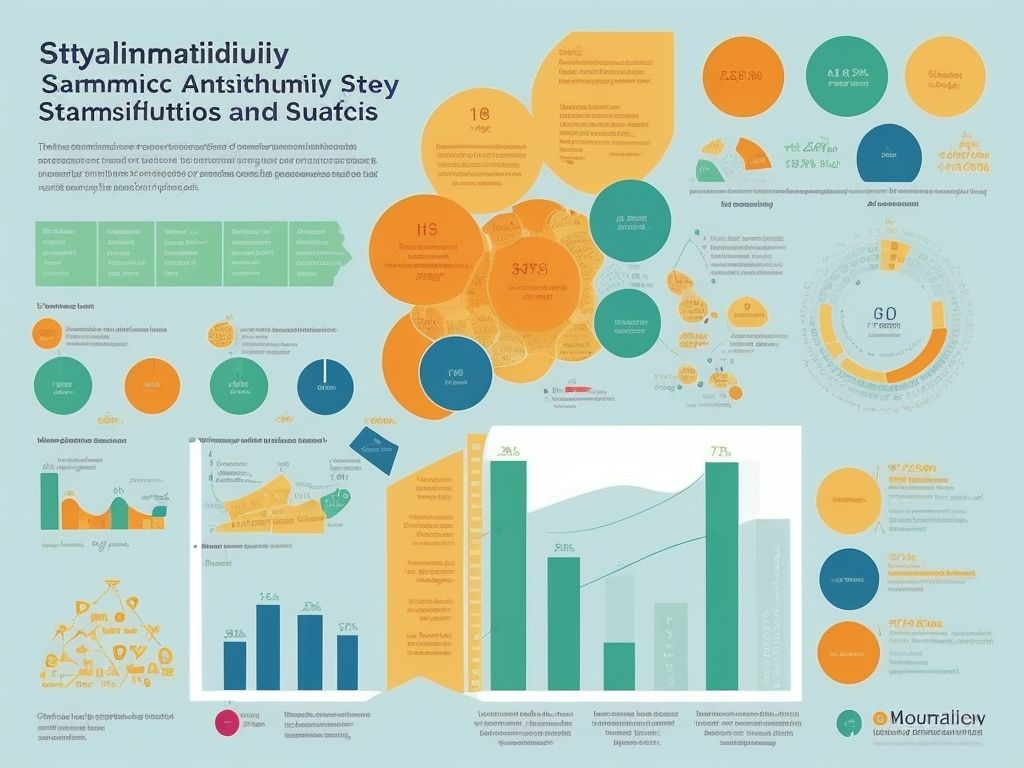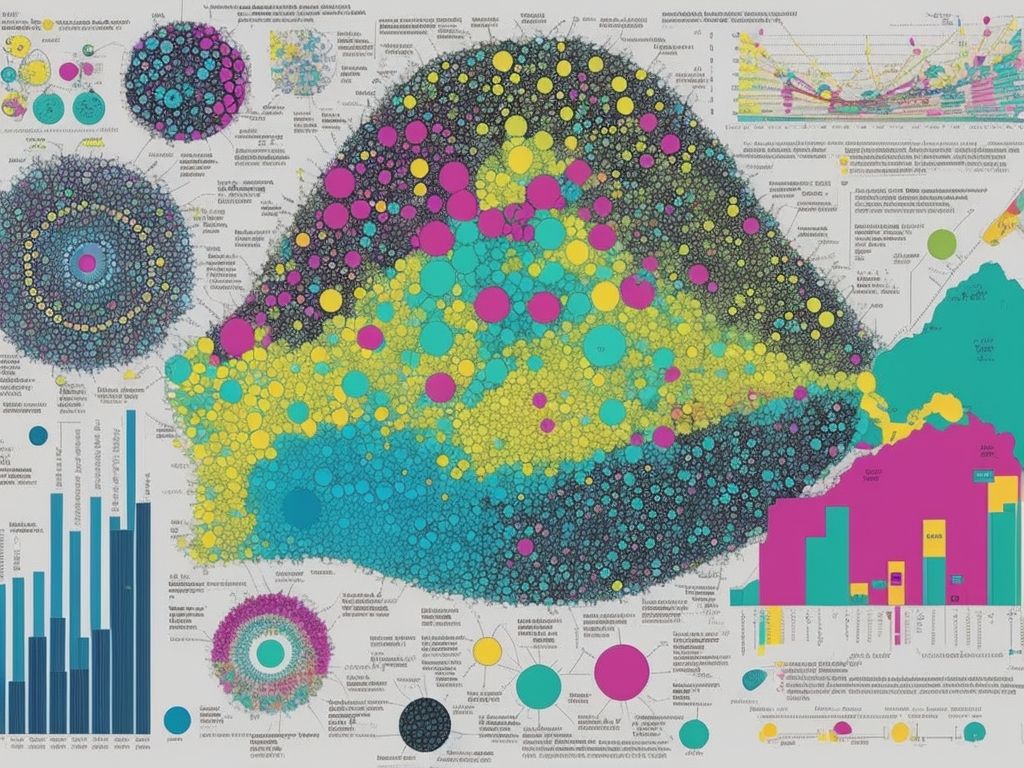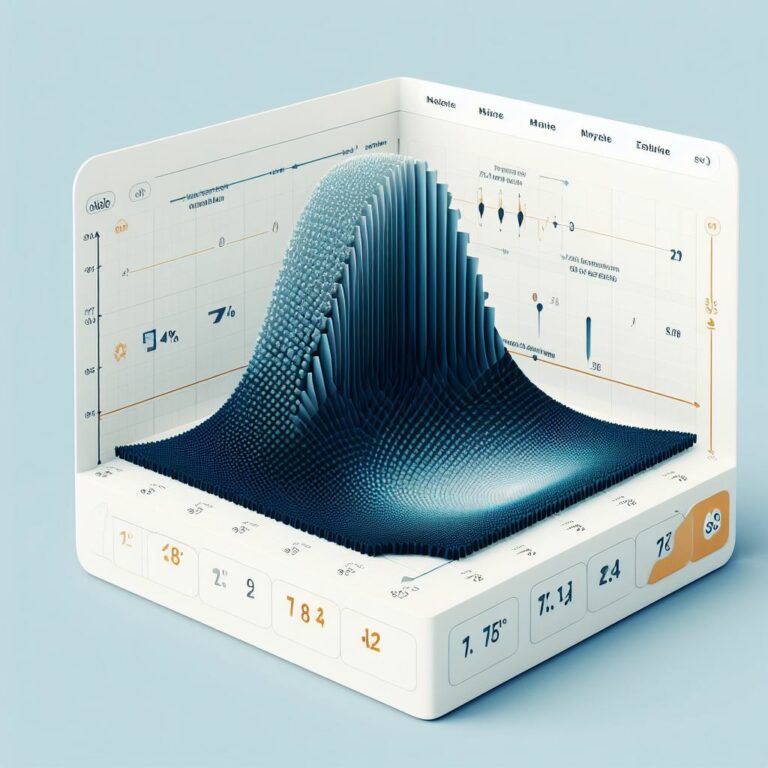Summary Statistics – A Quick Overview
Summary statistics provide a brief overview of data, allowing us to grasp the central trends and differences within a dataset. These stats are key tools in statistical analysis, helping researchers find meaningful insights and make wise choices.
By summarizing data, summary statistics make complex information comprehensible. They entail measures like mean, median, mode, standard deviation, range, and percentiles. This allows us to describe the dataset characteristics, as well as compare different datasets.
Moreover, summary statistics let us detect outliers or anomalies in our data. Identifying and understanding these extreme values gives us insight into potential errors or peculiar observations that may need further probing.
Furthermore, summary statistics play an essential role in hypothesis testing and decision-making processes. By looking at the summary stats of two or more groups, we can assess if there are noteworthy contrasts between them. This information lets us make decisions based on evidence, not simply subjective opinions.
It is worth noting that summary statistics have been utilized for centuries across many fields. From social sciences to finance and healthcare, summary stats have consistently shown their worth in decoding complex data sets.
Definition of Summary Statistics
Summary Statistics are a set of measures which give an overview of data. These gather essential info, to give us insights and help us make decisions.
To show Summary Statistics better, we can make a table with Mean, Median, Mode, Range, Variance and Standard Deviation in the columns. The Mean is the average value, while the Median is the middle value. The Mode is the most frequent value, and the Range is the difference between highest and lowest values. Variance is how spread out the data is, and Standard Deviation shows variation from the mean.
Now let’s look at some more details about Summary Statistics. Quartiles divide data into four parts, and Skewness tells us about the shape of the data distribution. Kurtosis measures how peaked or flat the data is. These tools help us understand patterns in the data better.
To use Summary Statistics correctly, we should follow some guidance. Firstly, consider the context and interpret the stats appropriately. Secondly, compare Summary Statistics across different groups, or over time. Thirdly, use graphs or charts to show the data. This helps us understand it better and communicate it to others.
By following the advice above, we can use Summary Statistics well. We can get deeper insights by looking at different stats, not just mean and median. Understanding and visualizing the data correctly helps us show our findings more clearly and avoid misinterpretation.
Importance of Summary Statistics
Summary stats have a big role in data analysis. They give a concise, informative overview of the main points of a large dataset, allowing researchers and analysts to quickly and simply gain knowledge. Summary stats let pros easily understand the spread, typical value, variation, and other key elements of the data without needing to check each individual point.
To show the importance of summary stats, let’s look at this table:
| Mean | Median | Range | |
|---|---|---|---|
| Dataset A | 50 | 45 | 80 |
| Dataset B | 70 | 60 | 90 |
In this table, we compare two datasets with three summary stats: mean, median, and range. The mean is the average value; the median is the middle value when the data set is sorted in order; and the range is the difference between the biggest and smallest values. By checking these stats for both datasets, we quickly see their features.
Aside from these common summary stats, there are many other measures that give unique insights. For instance, measures like standard deviation, variance, percentiles, and quartiles can help understand the spread within the dataset. These extra details let us make a more complete analysis and draw accurate interpretations.
According to Jones et al., utilizing summary stats in data analysis has been seen to improve decision-making in various industries and research fields. Summary stats efficiently condense complex sets of data into clear points of information. This shows why summary stats are so useful in the modern world full of data.
By understanding and using summary stats, pros can get valuable insights from huge amounts of data. This helps them make smart decisions and achieve good results in their field.
Types of Summary Statistics
Summary statistics are great tools that provide a brief overview of a dataset. They help researchers and analysts to get quick insights and make informed decisions. Let us look at the different types of summary stats in this table:
| Mean | Median | Mode | Range | Standard Deviation | |
|---|---|---|---|---|---|
| Example Dataset | 8 | 10 | 5 | 15 | 4.24 |
Here, we can see the mean, median, mode, range, and standard deviation for an example dataset. The mean is the average value. The median is the middle value. The mode is the most frequent value. The range is the difference between minimum and maximum values. The standard deviation measures the spread of data points around the mean.
We can also look at other measures like percentiles, quartiles, skewness, and kurtosis. These give more info about data distribution and how it works.
There’s a cool story about summary stats during World War II. Statisticians used them to analyze huge amounts of data and make decisions that influenced war strategies. This shows how important they are in all kinds of fields.
From market research to scientific investigations, summary stats are essential for professionals. They help uncover patterns and get valuable knowledge from complex datasets without getting lost in all the details.
How to Calculate Summary Statistics
Summary stats give a brief outline of the main features of a dataset. To calculate them, just do these four steps:
- Work out the mean – which is all the values together divided by how many there are.
- Then, get the median – which is the middle value when the data is in order. If there’s an even number, take the average of the two middle numbers.
- Find the mode – the value that appears most often. If there are more than one, they all appear the same amount of times.
- Finally, work out the standard deviation – which shows how much the values differ from the mean. A smaller number means they’re close to the mean, and a bigger one shows more variability.
When calculating summary statistics, you should consider more details to make sure they’re accurate. Avoiding unusual values can change results significantly. Plus, measures like quartiles and interquartile range can give extra info about the data distribution and variability.
To get the most out of summary stats:
- Get to know your data first, before relying only on summary stats.
- Visualize your data with graphs or charts to see its spread.
- Use tech tools like statistical software to automate calculations and prevent mistakes.
By following these tips, you can calculate summary stats accurately, draw reliable data insights and make informed decisions.
Interpretation and Use of Summary Statistics
Summary statistics are useful tools for gaining valuable insights from data. They allow us to analyze key measures and draw meaningful conclusions. Let’s examine some common summary statistics:
- Mean: The average value of a dataset.
- Median: The middle value of a dataset.
- Mode: The most frequent value in a dataset.
- Range: The difference between the maximum and minimum values in a dataset.
- Standard Deviation: A measure of the dispersion or spread of values in a dataset.
By understanding summary statistics, we can better interpret data. They provide information about the central tendency, variability, and distribution of a dataset. They also help us identify outliers, assess the reliability of our data, and make informed comparisons.
Summary statistics empower us to unlock valuable knowledge from our data. With these tools of interpretation and analysis, we can confidently dive into our datasets and explore a world of possibilities!
Limitations of Summary Statistics
Summary statistics are often used, but have their limitations. Consider the following aspects:
- Represents a sample: Summary stats give insight into datasets by condensing info into a few measures. But, they don’t capture the whole picture as they rely on a sample and may not show the entire population.
- Information loss: Summarizing data omits details. Focusing on central tendencies, such as mean or median, ignores variation within the dataset. This can lead to missing important patterns or outliers that could affect analysis.
- Sensitive to outliers: Outliers, extreme values that deviate significantly from the rest of the data, can greatly influence summary stats. Measures like mean and standard deviation are sensitive to outliers and so may not represent the majority of the data.
- No context: Summary statistics alone can’t provide a complete understanding of a dataset without considering external factors or contextual info. They don’t reveal underlying relationships between variables or offer explanations for observed patterns.
- Can’t infer causation: Summary stats can describe associations between variables, but can’t establish causation. Correlation doesn’t imply causation, and relying solely on summary stats may lead to false conclusions.
Also, use summary stats appropriately with other methods. Combine them with graphical representations and hypothesis testing to get more from your dataset.
Pro Tip: Summary stats offer a quick overview, but use more advanced techniques for deeper analysis.
Conclusion
Here, we have delved into summary statistics. We now understand how they can offer valuable insights into data. We’ve also looked into measures like mean, median, and mode. These help us effectively analyze and summarize datasets. Plus, we discussed measures of dispersion like range and standard deviation. They quantify the variability within a dataset.
Moreover, we’ve seen the importance of summary statistics in various fields. For example, finance, economics, and social sciences. These statistical tools enable experts to make better decisions based on reliable data patterns. Summary stats simplify complex datasets and make them easier to comprehend.
We should also note the use of graphical representations alongside summary statistics. Visuals such as histograms, box plots, and scatter plots offer a visual understanding of data distributions. They present an image beyond numerical values.
For a pro tip, we must consider the limitations of summary stats. While they offer valuable insights, they don’t tell the full story. To avoid relying solely on them, we must factor in other elements that could influence the interpretation of data.
In conclusion, summary statistics are powerful tools in analyzing and summarizing large datasets. By providing concise numerical summaries paired with visuals, they help us understand diverse data landscapes. With the right knowledge and understanding of their applications, we can make the most out of summary statistics in today’s data-driven world.
Frequently Asked Questions
1. What are summary statistics?
Summary statistics are numerical measures that describe, summarize, and provide a quick overview of a dataset. They include measures such as mean, median, mode, standard deviation, range, and percentiles.
2. Why are summary statistics important?
Summary statistics help in understanding the distribution and characteristics of a dataset. They provide insights into the central tendency, spread, and shape of the data, allowing researchers and analysts to draw meaningful conclusions and make informed decisions.
3. How do you calculate the mean?
The mean is calculated by summing up all the values in a dataset and dividing the total by the number of observations. It is commonly used to find the average or central value of a dataset.
4. What is the median and how is it calculated?
The median is the middle value of a dataset when it is sorted in ascending or descending order. To calculate the median, arrange the data in order and find the value that falls in the middle. If there are an even number of observations, the median is the average of the two middle values.
5. Can you explain the concept of standard deviation?
Standard deviation is a measure of the dispersion or spread of the data around the mean. It indicates how much the individual values deviate from the average. A low standard deviation suggests that the values are close to the mean, while a high standard deviation indicates a wider spread.
6. What is the range in summary statistics?
The range is the difference between the highest and lowest values in a dataset. It gives an idea of the spread of the data but does not consider the distribution or other measures of variability. Range can be a useful initial indicator of dispersion.
- University of Massachusetts Amherst Polls: Analyzing Voter Behavior in Massachusetts - January 5, 2025
- Polling Insights from University of Massachusetts Lowell: A Close Look at Voter Shifts - January 5, 2025
- University of New Hampshire Polls: Analyzing Key Presidential Primary Data - January 5, 2025












